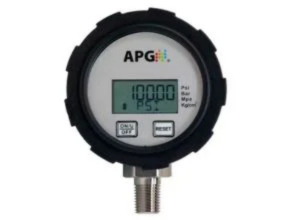Description
TURBICUBE Bamo In-Line Turbidity System measures the turbidity of the liquid using attenuated light beam (at 180°) and a scattered light beam (at 90°) with a 860 nm wavelength light, according to European standard ISO 7027. The measurement system integrates an assembly with 2 emitters and 1 receiver with a micro-processor in the main housing. The 4-20 mA output signal corresponds to the selected scale in use.
TURBICUBE Bamo Turbidity Features
- Continuous turbidity measurement according to ISO 7027: 90° scattered light measurement and 180° attenuated light measurement
- Smooth cell surfaces – no settling of particles
- Measurement ranges:
- 0.01 … 20 FNU
- 0.1 … 500 FNU & 100 … 1000 FAU
- Output signal: 4-20 mA
- Process connections: Flanges or unions
TURBICUBE 20:
- 5 scale ranges to select by DIP switches from 0.01 … 1 up to 0.01 … 20 FNU
TURBICUBE 1000:
- 5 ranges to select by DIP from 0.1 … 500 FNU and 100 … 1000 FAU
MOUNTING
- Only for vertical fully loaded pipe, with ascending flow. Slow down sections: 600 mm before device and 400 mm after device.
Application
- Well water monitoring
- Monitoring of filtering or reverse osmosis units.
- Control of the sewage plant outlet
- Cooling water monitoring
- Filter clogging monitoring
TURBICUBE Bamo Turbidity Specification
| Ambient temperature | +5 … +45 °C |
| Liquid temperature | PVC: +5 … +60 °C |
| PPH: +5 … +80 °C | |
| Pressure limits | Max. 6 bar at 20°C (PVC and PPH) |
| and 1 bar at 60 °C (PVC and PPH) | |
| MATERIALS | |
| Measuring cell | PVC or PP |
| Connection head | PBT housing (glass fiber reinforced); IP 65 according to EN 60529 |
| Sealings | EPDM (others on request) |
| Optical windows | Borosilicate glass, Cleanosil coating |
Download Data Sheet: In-Line Turbidity System TURBICUBE
Reference: bamo.eu
Another Article:
- AW Lake Turbidity Sensor and Wireless/Bluetooth
- Hengesbach Turbidity Sensor TURBIMESS NG
- Proscan Turbidity Sensor AW Lake
- Hengesbach Analytical Measurement and Evaluation
- Bamo Side Level Controller CNL
- Bamo Turbidity Monitor BAMOPHAR 436
- Pressure Switch 132 P Series
- MarelliMotori Series Motors Marine A_M – B_M
- MarelliMotori Series Generators Oil & Gas MJV – MJHV
- Gastec WP-132 Waste Water Test Kit





